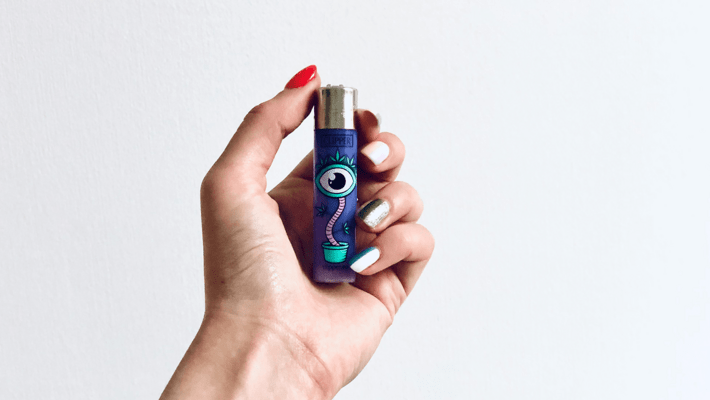
How Does Cannabis Tolerance Work?
Published on 7/10/21
For those who love cannabis, settling into a routine with its use is common. Get home from work, take a toke, relax and move forward with your evening. Or maybe you prefer your favorite edible to set the proper tone for a sunny Saturday hike. While you are enjoying marijuana on a regular basis, your body works quickly to build tolerance. Over a period of time, you will begin to notice that just a bit more weed is necessary to get your mental and physical states just right. Why does this happen? Let's take a look.
What is Cannabis Tolerance?
 Unsplash
UnsplashThe medical community understands tolerance as the need to take more of a drug to achieve a certain level of intoxication. Cannabis tolerance is the degree to which the body develops an endurance to the intoxicating and therapeutic effects of the cannabinoid tetrahydrocannabinol (THC) when it is regularly consumed. When the body first experiences THC, the effects can be acquired with minimal amounts of cannabis intake. Eventually, with regular use, more marijuana will be necessary for the body and brain to achieve the same state. THC provides a psychoactive experience when it binds to the body's CB1 receptors, a key component of the body's endocannabinoid system (ECS). CB1 receptors and THC also work together to affect things like pain acknowledgment or management, sleep preferences, appetite and stress.
Thanks in large part to the ECS, the human body is self-regulating and will work to limit the effects of THC when it is exposed to it frequently and for protracted lengths of time. The CB1 receptors have a limited capacity and when exposed to regular doses of the high levels of THC common in today's cannabis, they dysregulate, meaning that they become less sensitive to the components of the active cannabinoid.
Developing a Tolerance to Cannabis
The length of time it takes to develop a tolerance to cannabis depends on several factors but is ultimately determined by each person's physiology. Much in the same way in which ingesting cannabis can affect individuals in different ways, so too does the development of a tolerance. Unlike alcohol, there is no understood link between body weight and cannabis tolerance. Additionally, since the effects of THC are handled via the ECS as it works to maintain homeostasis, the body works differently than with alcohol to keep things balanced.
The strength of cannabis and the frequency of use are the two key factors to cannabis tolerance development. The higher the THC concentration, the faster tolerance will develop. Also, daily consumption will generally result in the more rapid development of tolerance because the CB1 receptors do not have time to return to a baseline state. Studies have found that tolerance to cannabis will generally develop over a period of just a couple of weeks when consumed at high rates on a daily basis.
Heavy or chain smokers will find that they need to reach for stronger options like concentrates or dabs to return to the elusive "high" that they experienced in the past with moderate flower use. Medical marijuana patients will have trouble getting the relief that they normally receive from cannabis. A high tolerance to weed can also be problematic because constant vaping or smoking can possibly lead to respiratory problems like chronic cough and phlegm production with long-term use.
Taking a Cannabis Tolerance Break
 Unsplash
UnsplashThe easiest and safest way to reset your brain and body to enjoy the benefits of cannabis use is to take a weed tolerance break. Known colloquially as a T-break, it will allow the brain to reboot and provide the opportunity for dulled or withdrawn CB1 receptors to reestablish themselves will reset your tolerance to normal levels so you can return to enjoying cannabis as desired. A T-break will also help you save some money and clear your head. How long should a tolerance break be? For some cannabis lovers, a simple two-day tolerance break should be enough to restore normal activity and levels of sensitivity.
Tolerance Break Tips
A tolerance break length does not have to be predetermined. It can come as an act of convenience when daily routines are disrupted because of things like travel, holidays, illness or altered work schedules. Conversely, some heavy marijuana users will create a tolerance break chart to better schedule when to take a pause in consumption and better understand how long they need to stop based on their daily intake. If you are only using around .5 gram per day, a long break might not be necessary to allow your body to reset. T-break lengths will rise dramatically if larger amounts like a couple of grams a day are consumed. The standard tolerance break calculator indicates that if you are smoking over three grams per day you will need three months to completely remove THC from your system, also known as a THC detox.
Other options aside from taking a complete break from cannabis include opting for strains with higher cannabidiol (CBD)-to-THC ratios, strictly managing intake to keep from over-consuming when not necessary, and simply smoking or ingesting with less frequency. Regular marijuana users who take an occasional day off will find it far easier to keep tolerance low than those who choose to indulge without taking a break.
Do you have problems with cannabis tolerance? How does it affect you? Do you need to take time off, and if so, for how long? Let us know in the comments section below!
